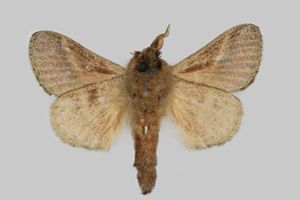Länder:

 +15Kontinente:AF
+15Kontinente:AF


 +15Kontinente:AF
+15Kontinente:AFNeues Layout der Navigation (Beta Test)
LebendfotosFalterDiagnoseBiologieRaupennahrungspflanzenWeitere InformationenAndere KombinationenFaunistikLiteraturInformationen auf anderen Websites (externe Links)
2. Diagnose
2.1. Männchen
1-2: ♂, Simbabwe, Manicaland Province, Vumba, Bunga Forest, Seldomseen, 19°06’19.9”S 32°45’07.5”E, tropischer Regenwald, 1680 m, 3. Dezember 2024, am Licht, leg. Harald Lahm & Jürgen Lenz (det., coll. & Foto: Harald Lahm)Forum
3. Biologie
3.1. Raupennahrungspflanzen
Halleria lucida und verschiedene Asteraceae (Stade et al., 2023) sowie Bidens pilosa und Senecio spec. (Pinhey, 1975)
4. Weitere Informationen
4.1. Andere Kombinationen
- Lebeda bipars Walker, 1855 [Originalkombination]
4.2. Faunistik
Nach [AfroMoths] kommt die Art in Botswana, der Elfenbeinküste, Eswatini, Ghana, Kenia, Lesotho, Malawi, Mozambique, Namibia, Ruanda, Südafrika, Tansania, Uganda, Zambia und Zimbabwe vor.
Locus typicus: Holotype ♀, KwaZulu-Natal, Port Natal [Durban], Südafrika, im Natural History Museum, London.
(Autor: Harald Lahm)
4.3. Literatur
- Erstbeschreibung: Walker F. (1855): List of the specimens of lepidopterous insects in the collection of the British Museum. Part VI. Lepidoptera Heterocera, Volume 6, Seite 1455.
- Staude, H, Picker M, Griffiths C. (2023): Southern African Moths and their caterpillars. Kindle Edition, Seite 1054.
- Pinhey, E.C.G. (1975): Descriptions and colour illustrations of 1183 species. Tafelberg Publishing, Cape Town. Seite 122.



















